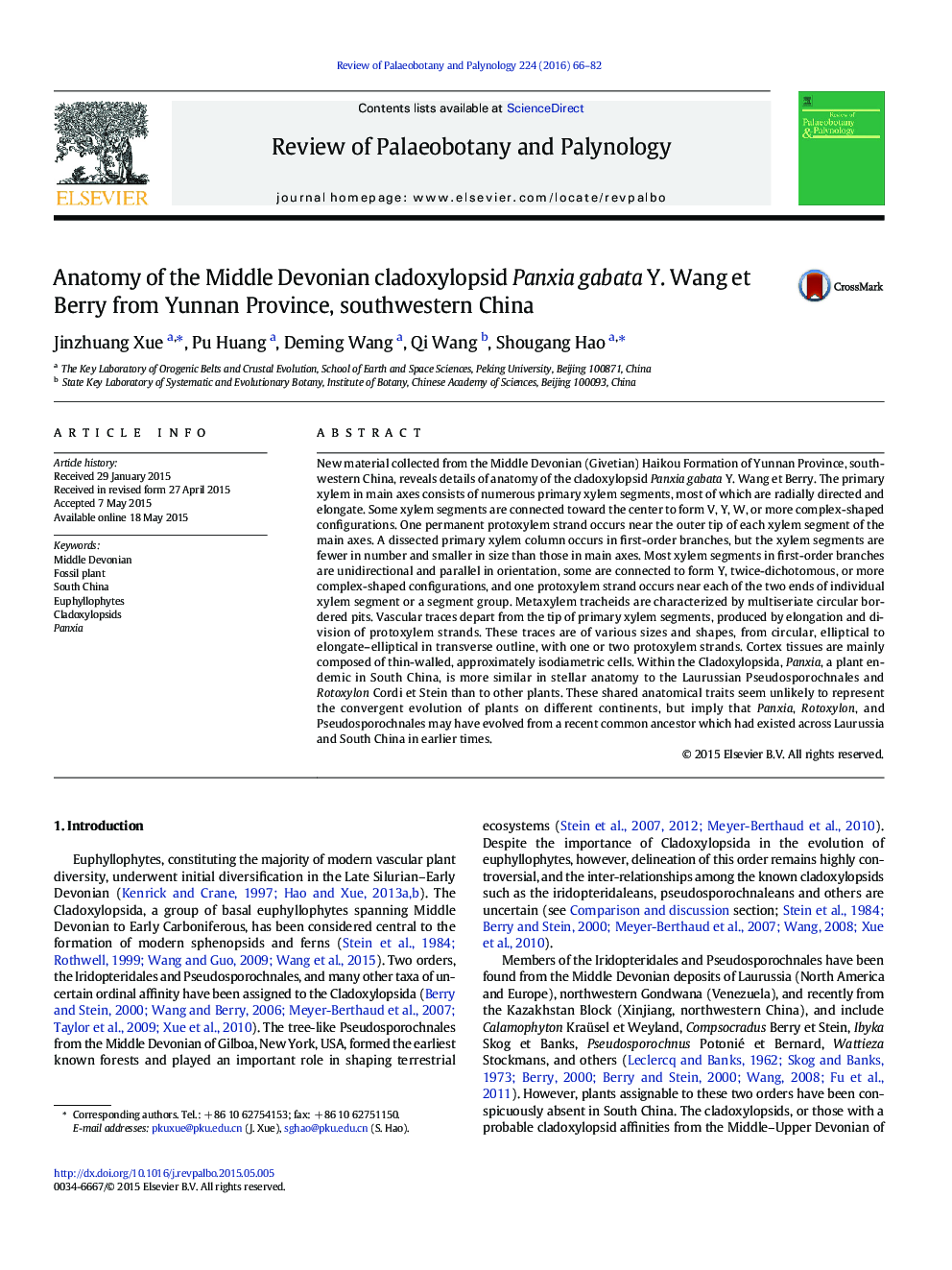| Article ID | Journal | Published Year | Pages | File Type |
|---|---|---|---|---|
| 4750166 | Review of Palaeobotany and Palynology | 2016 | 17 Pages |
•Anatomy of the Middle Devonian cladoxylopsid Panxia from South China is revealed.•Main axes contain a dissected stele with radially directed primary xylem segments.•One permanent protoxylem strand occurs near the tip of primary xylem segments.•Metaxylem tracheids with multiseriate circular bordered pits•Panxia is more similar to the Laurussian Pseudosporochnales and Rotoxylon in anatomy.
New material collected from the Middle Devonian (Givetian) Haikou Formation of Yunnan Province, southwestern China, reveals details of anatomy of the cladoxylopsid Panxia gabata Y. Wang et Berry. The primary xylem in main axes consists of numerous primary xylem segments, most of which are radially directed and elongate. Some xylem segments are connected toward the center to form V, Y, W, or more complex-shaped configurations. One permanent protoxylem strand occurs near the outer tip of each xylem segment of the main axes. A dissected primary xylem column occurs in first-order branches, but the xylem segments are fewer in number and smaller in size than those in main axes. Most xylem segments in first-order branches are unidirectional and parallel in orientation, some are connected to form Y, twice-dichotomous, or more complex-shaped configurations, and one protoxylem strand occurs near each of the two ends of individual xylem segment or a segment group. Metaxylem tracheids are characterized by multiseriate circular bordered pits. Vascular traces depart from the tip of primary xylem segments, produced by elongation and division of protoxylem strands. These traces are of various sizes and shapes, from circular, elliptical to elongate–elliptical in transverse outline, with one or two protoxylem strands. Cortex tissues are mainly composed of thin-walled, approximately isodiametric cells. Within the Cladoxylopsida, Panxia, a plant endemic in South China, is more similar in stellar anatomy to the Laurussian Pseudosporochnales and Rotoxylon Cordi et Stein than to other plants. These shared anatomical traits seem unlikely to represent the convergent evolution of plants on different continents, but imply that Panxia, Rotoxylon, and Pseudosporochnales may have evolved from a recent common ancestor which had existed across Laurussia and South China in earlier times.
